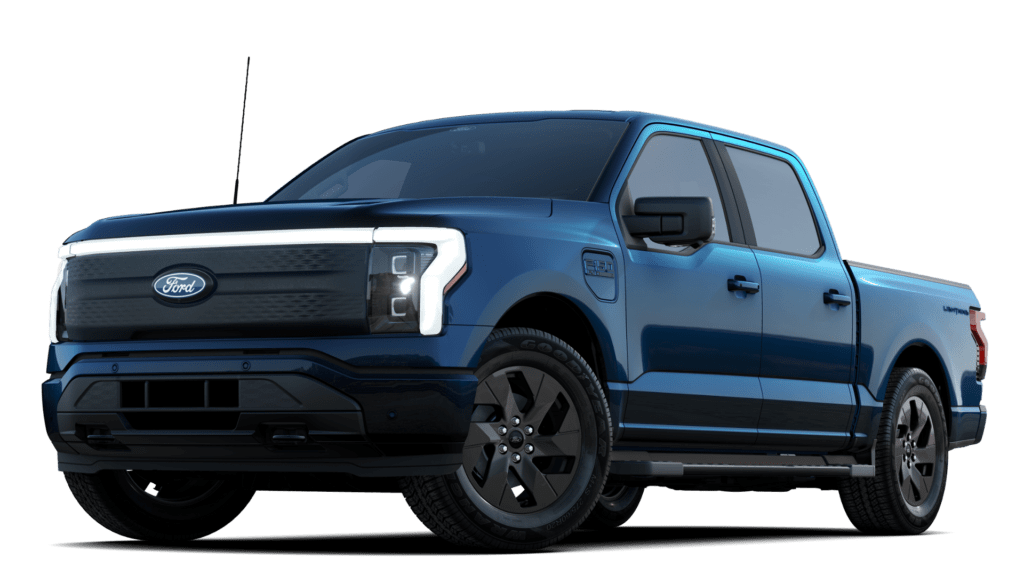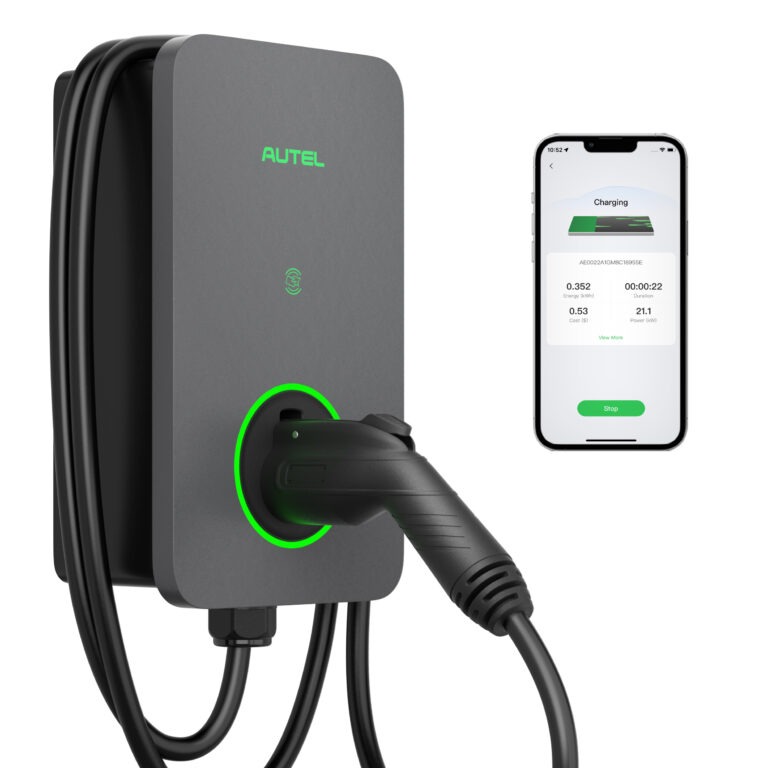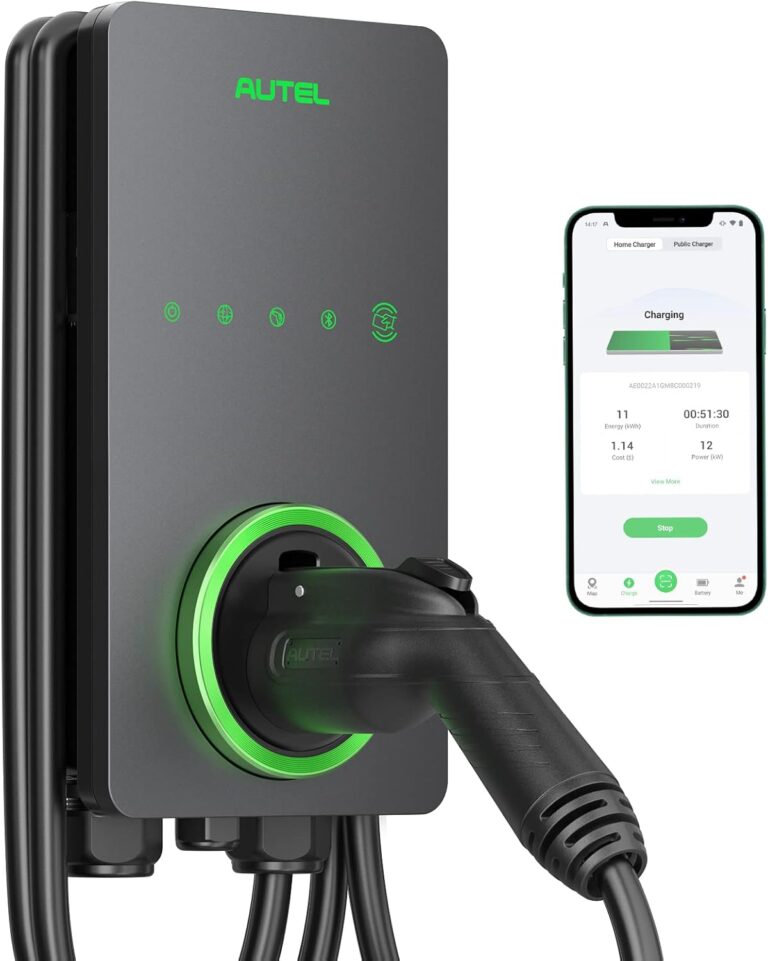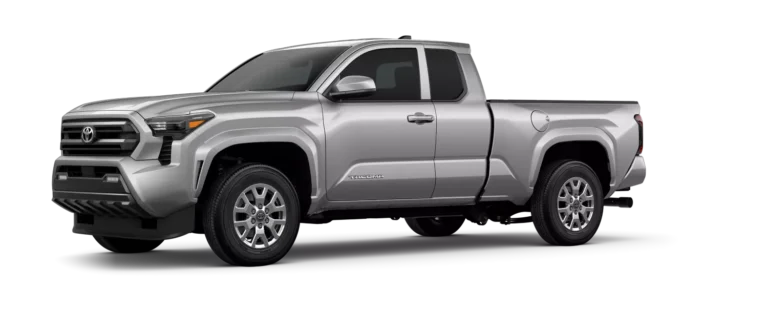
Best EV Charger For Ford Lightning!
- Last Updated
- December 3, 2024
After clicking ‘Check Any VIN number,’ enter your VIN and email address in the top right corner of the page.
Your Ultimate Guide To The Best EV Chargers For The Ford Lightning!
Looking for the best EV charger for the Ford Lightning?
We’ve done the hard work so you don’t have to! After thorough research and testing, we’ve identified the top EV chargers for the F150 Lightning.
Say goodbye to confusion and endless searching. The perfect Ford F150 Lightning charger awaits below!
Best EV Charger For The Ford Lightning: Our Top Picks
Best EV Charger For The Ford Lightning
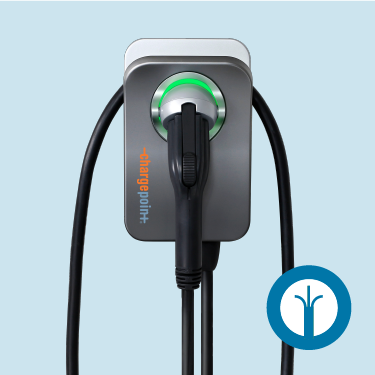
ChargePoint Home Flex Level 2
- Charging Speed: Up to 12kW (50 amps)
- Compatibility: Type 1 (J1772)
- Warranty: 3 years
- Smart Features: Yes (WiFi, App)
- Installation Time: Typically under 3 hours
- Cable Length: 23-feet
- Reviews: 3000+ 4.5 Stars
The ChargePoint Home Flex Level 2 is a reliable, flexible, and powerful EV charger designed to meet all your charging needs, whether you’re driving an electric car, hybrid, or multiple vehicles in your household. With its ability to deliver up to 50 amps of power, the Home Flex can charge your vehicle up to nine times faster than standard Level 1 chargers, making it perfect for EV owners who need quick, convenient top-ups between commutes or long trips.
The best home EV chargers, like the ChargePoint Home Flex, stand out due to their high amperage, adjustable power settings, and smart features. The Home Flex is compatible with all electric vehicles, offers a range of amperage options (16A to 50A), and includes Wi-Fi connectivity to monitor and manage charging from your smartphone. It’s an ideal choice for households looking for future-proof charging with versatility across multiple EV models.
High-end EV chargers, like the ChargePoint Home Flex, also come equipped with advanced safety features and energy-saving scheduling, allowing you to optimize charging times to reduce costs by syncing with off-peak hours. Additionally, with its sleek design and ease of installation (both plug-in and hardwired options), the Home Flex is perfect for those who want a charger that blends in and doesn’t take up much space in a garage or driveway. With proper maintenance, this charger can serve your EV needs for years to come.
Adjustable amperage from 16A to 50A, providing up to 37 miles of range per hour of charging.
Compatible with all electric vehicles that use a J1772 connector (most EVs).
Requires a dedicated 40-amp circuit; may need a licensed electrician for installation.
- Adjustable amperage for flexibility in charging speeds.
- Smart features for scheduling and tracking charging.
- Compact design for easier installation.
- Higher installation costs due to electrical upgrades.
- Requires a Wi-Fi connection for full functionality.
- You need a fast, reliable charger for any EV model. The ChargePoint Home Flex is compatible with all electric vehicles and can charge them up to 9x faster than Level 1 chargers.
- You want smart charging features. The ChargePoint app allows you to monitor charging sessions, set charging schedules, and track energy usage remotely.
- You’re looking for flexibility. With its adjustable amperage settings, you can optimize charging for your home’s electrical system and vehicle needs.
Budget EV Charger For Ford Lightning
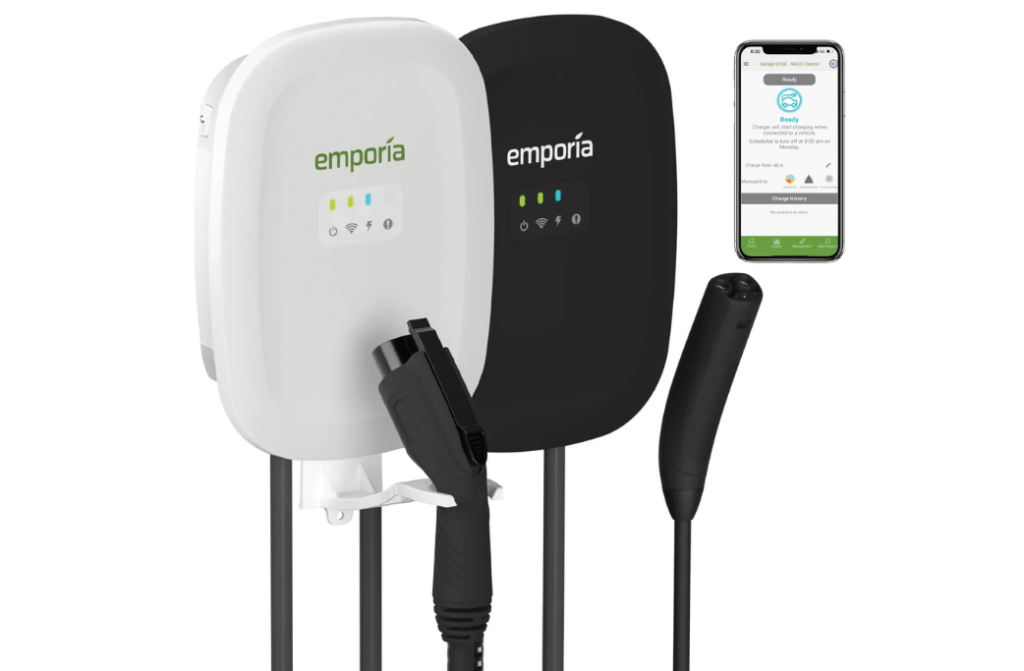
Emporia Level 2 EV Charger
- Charging Speed: 11.5 kW (48 amps)
- Compatibility: Type 1 (J1772)
- Warranty: 3 years
- Smart Features: Yes (Energy Monitoring)
- Installation Time: Typically under 2 hours
- Cable Length: 24-feet
- Reviews: 2000+ 4.7/5 Stars
The Emporia Level 2 EV Charger offers a smart, cost-effective solution for EV owners seeking both efficiency and energy management. With its 48-amp capacity, it delivers up to 9.6 kW of power, providing up to 46 miles of range per hour, making it perfect for home use and ensuring your EV is ready when you need it.
One of the best features of the Emporia EV Charger is its smart app integration, which allows you to monitor charging sessions, track energy usage, and even set charging schedules to take advantage of off-peak electricity rates, saving you money over time. The charger is also compatible with Emporia’s energy management system, enabling you to optimize your household’s energy consumption by integrating solar power or other energy-saving tools.
This charger is UL-certified, weatherproof, and built to last, making it suitable for indoor or outdoor installation. In terms of the Emporia EV charger installation options, its an easy setup and versatile plug-in or hardwired installation. The Emporia Level 2 Charger will fit into any garage or parking space.
Up to 48 amps; charges most EVs from empty to full in about 8 hours.
Works with all J1772 compatible EVs. (Most EVs)
Requires a dedicated 40-amp circuit; professional installation recommended.
- Smart charging features for efficient energy use.
- High amperage allows for faster charging.
- Compact design for easy installation.
- Requires a dedicated circuit, which can add to installation costs.
- Limited availability in some regions.
- You want to save on energy costs by setting charging schedules and tracking your usage via a smart app.
- You are interested in integrating your EV charging with a broader home energy management system, including solar power.
- You’re looking for a high-powered, reliable charger with flexible installation options for both indoor and outdoor use.
Most Compact EV Charger
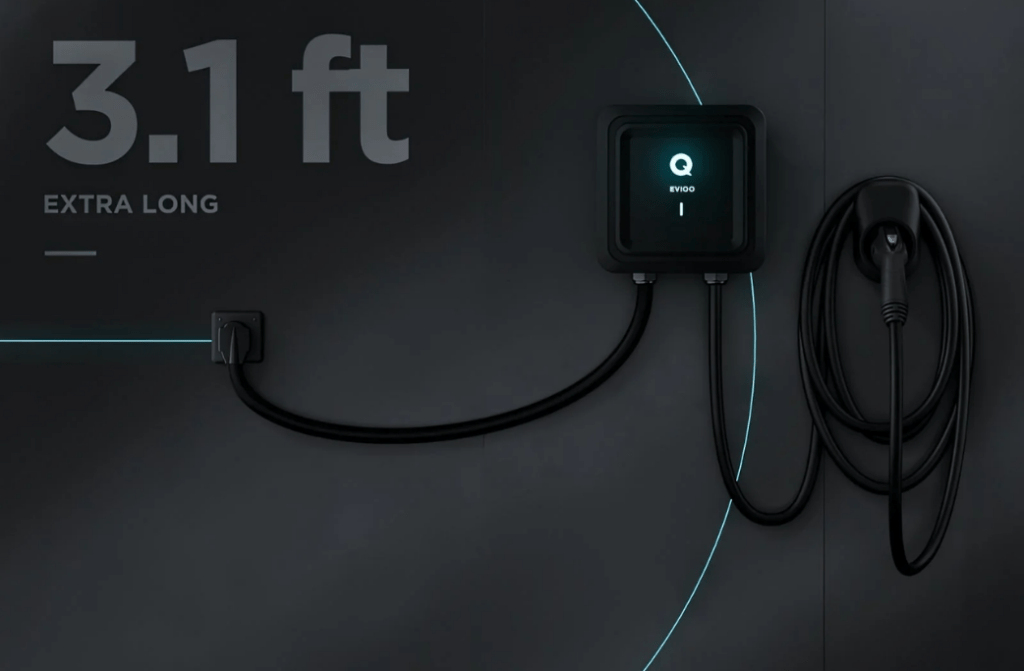
EVIQO Level 2 EV Wall Charger
- Charging Speed: Up to 48 amps (11.5kW)
- Compatibility: Type 1 (J1772)
- Warranty: 3 years
- Smart Features: Yes (WiFi, App)
- Installation Time: Typically under 2 hours
- Cable Length: 25 feet
- Reviews: 750+ 4.9/5 Stars
The EVIQO Level 2 Charger is an efficient and durable charging option, designed to deliver reliable power to your electric vehicle. Offering up to 40 amps of charging power, it can provide around 30 miles of range per hour, ensuring a fast and consistent charge whether you’re at home or in a commercial setting.
What sets the EVIQO apart is its simple, no-fuss design. The unit is sleek and robust, with a weather-resistant housing that makes it suitable for both indoor and outdoor installations. With a user-friendly plug-in setup, it offers flexibility, making it easy to install in your garage or driveway without the need for extensive electrical work. Its ergonomic connector and long cable add convenience, giving you the reach and flexibility to charge your EV comfortably.
The EVIQO Level 2 Charger is built for durability and requires minimal maintenance, so it’s a great fit for EV owners seeking a no-hassle, long-term charging solution. It’s compatible with all standard EV models, ensuring versatility no matter the make or model of your vehicle.
Charges at 32 amps; provides up to 25 miles of range per hour.
Compatible with all J1772 vehicles. (Most EVs)
Requires a 40-amp circuit; professional installation is advised.
- Reliable performance with user-friendly features.
- Good balance of price and charging speed.
- Lightweight design for easier handling.
- Less known brand may lack some consumer confidence.
- Slower than higher amp chargers.
- You want a straightforward, reliable EV charger that provides fast, consistent charging.
- You need a durable, weatherproof charger for indoor or outdoor use, with easy installation.
- You value flexibility with a long cable and a no-fuss setup that doesn’t require complex wiring.
Table of Contents
How Much Does It Cost to Install a Home Charger for the Ford Lightning?
Installing a home charger can range from $500 to $2,000, depending on your existing electrical setup. Here’s a breakdown of the cost. Here is our breakdown on how to install the ChargePoint Flex, which also works with the F150 Lightning.
- Hardware Costs: The best EV chargers for Ford Lightning, such as the JuiceBox 40 or ChargePoint, cost $400–$700.
- Electrical Upgrades: If you need a 240V outlet or panel upgrade, expect to pay $500–$1,500.
- Professional Installation: Hiring a certified electrician adds $300–$500.

Cost of Charging Your Ford Lightning at Home vs Public Stations
Charging at home is typically cheaper:
- Home Charging: Costs ~$10–$15 for a full charge, depending on electricity rates.
- Public Charging: DC fast chargers may cost $20–$30 for a similar charge.
Installing the best EV charger for Ford Lightning at home saves money and offers convenience.
What Level of Charger is Needed for the Ford Lightning?
The Ford F150 Lightning works best with a Level 2 EV charger.
- Level 1 Charger: Comes standard with the vehicle but charges slowly, adding only 3-5 miles of range per hour.
- Level 2 Charger: Offers a charging rate of 20–30 miles of range per hour, fully charging the Lightning overnight.
- Level 3 (DC Fast Charger): Primarily for public stations, adding 80% charge in 40–50 minutes but isn’t practical for home use due to cost and infrastructure requirements.
For most Ford Lightning owners, a Level 2 charger strikes the perfect balance of convenience, efficiency and cost.
Can I Use a Public Charger for My Ford Lightning, and Is It Faster?
Yes, the Ford Lightning supports public charging, including DC fast chargers, which are significantly faster:
- Level 3 (DC Fast Chargers): Add up to 80% charge in about 40 minutes.
- Level 2 Public Chargers: Similar speed to home Level 2 chargers. These are often located in malls or workplaces.
While public chargers are faster for quick top-ups, installing the best EV charger for Ford Lightning at home saves time and money in the long run.
Are Solar Powered EV Chargers a Good Choice for the Ford Lightning?
Solar powered EV chargers can be an eco-friendly and cost-effective solution for your Ford Lightning:
- Benefits: Reduces energy bills and lowers your carbon footprint.
- Considerations: Requires upfront investment for solar panels and battery storage.
- Best Options: Pairing the Lightning with a solar-compatible charger like the JuiceBox 40 ensures seamless integration.
We have a full guide on solar-powered EV chargers here if this seems like a desirable option.
What Are the Benefits of Installing a Level 2 Charger for the Ford Lightning?
The Ford F-150 Lightning supports multiple charging options:
- Level 1 (120V): Suitable for emergencies but very slow.
- Level 2 (240V): Recommended for regular home use. Using the Ford Connected Charge Station (48 amps), you can achieve faster charging rates.
- DC Fast Charging (Level 3): The truck supports up to 150 kW fast charging, which is ideal for long trips or fast recharging. At a 150 kW public fast charger, you can gain up to 54 miles of range in about 10 minutes.
Investing in a Level 2 charger offers numerous benefits:
- Faster Charging: Fully charge your Lightning overnight.
- Convenience: No need to rely on public chargers.
- Cost Savings: Lower electricity rates during off-peak hours.
- Resale Value: A professionally installed charger can increase your property value.
The best EV charger for Ford Lightning ensures your truck is always ready to go, whether for work or adventure.
How Do I Maintain My Ford Lightning Charger for Optimal Performance?
Proper maintenance ensures the longevity of your EV charger:
- Regular Inspections: Check for wear or damage to cables and connectors.
- Keep It Clean: Wipe down the unit to remove dirt and debris.
- Update Firmware: Smart chargers like the JuiceBox 40 often require software updates for improved functionality.
- Avoid Overheating: Ensure the charger is installed in a ventilated area.
These steps ensure the best EV charger for Ford Lightning performs at its peak for years.
What Charging Apps Work Best with the Ford Lightning?
Pairing your Ford Lightning with the right charging app enhances your experience:
- FordPass: Monitor charge status and find public chargers. Check the Ford website here.
- ChargePoint: Locate public stations and track home charging.
These apps integrate seamlessly with your EV charger for your Ford Lightning.

Does the Ford Lightning Support Bidirectional Charging?
Yes, the Ford F150 Lightning supports bidirectional charging through its Ford Intelligent Backup Power feature.
- Power Your Home: During an outage, the truck can supply power for up to three days.
- Compatible Chargers: The Ford Charge Station Pro is designed for bidirectional functionality.
This feature makes the Lightning not just a truck but a reliable energy source for your home, adding to its appeal.
ChargePoint Home Flex Dimensions
- Height: 12.2 inches (31 cm)
- Width: 6.6 inches (16.8 cm)
- Depth: 4.2 inches (10.7 cm)
- Weight: 18 pounds (8.2 kg)
Why ChargePoint?
The ChargePoint Home Flex EV charger is designed with features that prioritize both convenience and future adaptability for Ford Lightning EV owners. Among its highlights is the charger’s cable, which remains highly flexible even in freezing temperatures, making it easy to handle and store neatly.
Stable Wi-Fi Connectivity
Although some users have noted connectivity issues, our tests revealed that the Home Flex consistently maintained a strong and stable Wi-Fi connection, ensuring reliable performance.
Versatile Installation Options
The Home Flex is available in hardwired and plug-in versions. We tested the plug-in model equipped with a NEMA 14-50 plug, making it compatible with various home electrical setups.
User-Friendly Installation Design
A distinctive feature of the ChargePoint Home Flex is its detached charging cable. While connecting the cable is a simple process, individuals unfamiliar with electrical tasks might prefer professional installation. ChargePoint explains that shipping the unit without the cable allows for easier mounting of the electronics box, a claim we found accurate during installation.
Future-Proof Cable Swapping
The Home Flex also stands out for its cable-swapping capability. Owners who initially choose the J1772 connector can easily switch to Tesla’s NACS system by ordering and installing a new cable. With major automakers like Volkswagen, Audi, and Porsche planning to adopt the NACS standard by 2025, this adaptability positions the Home Flex as a forward-thinking investment for EV owners.
Discover the value of your cars options and specification!
- Select from thousands of vehicles and options
- See how each option adds value to your car
- Discover which tech features add a premium
- Spot which options hold their value over time
- Find out if that 'Sport' package pays off later
- Identify high value features others miss
$355 $354 $353 $352 $351 $350
Can you charge a Ford Lightning at Tesla chargers?
Currently, most Tesla Superchargers in North America use a proprietary connector that is incompatible with Ford vehicles. However, Tesla has announced plans to open some of its Supercharger network to non-Tesla EVs.
If the Superchargers become available for the F-150 Lightning, an adapter (like a CCS to Tesla connector) would be required. As of now, third-party chargers that use the CCS (Combined Charging System) standard are the primary option for Ford vehicles.
Does Ford make a Level 2 charger?
Yes, Ford offers a Level 2 charger called the Ford Connected Charge Station. It delivers up to 48 amps of power, significantly reducing charging times compared to standard Level 1 options. This station is compatible with the F-150 Lightning and can be installed at home by a certified electrician.
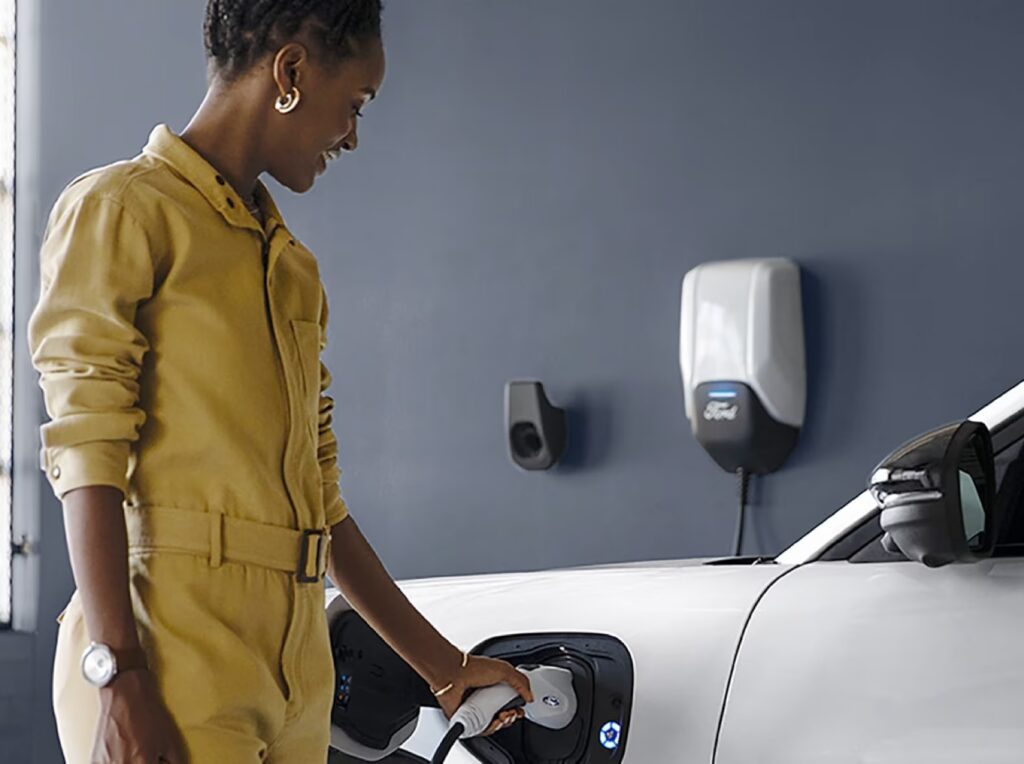
How much is the Ford bidirectional charger?
The Ford Charge Station Pro, which enables bidirectional charging for the F-150 Lightning, costs approximately $1,310. This system supports Ford’s Intelligent Backup Power feature, allowing the vehicle to supply electricity to your home during outages. Additional installation costs vary depending on the home’s electrical infrastructure.
How many amps to charge a Ford Lightning?
The F-150 Lightning can charge at various amperages depending on the power source:
- Level 1 (120V outlet): About 12 amps.
- Level 2 (240V outlet): Up to 48 amps with the Ford Connected Charge Station.
- DC Fast Charging (Level 3): Not measured in amps but uses up to 150 kW.
Is 150 kW fast charging?
Yes, 150 kW is considered fast charging in the EV industry. At a 150 kW charger, the F-150 Lightning can recharge from 15% to 80% in about 41 minutes, which is excellent for road trips.
What is the life expectancy of the F-150 Lightning battery?
Ford estimates the F-150 Lightning’s battery life at 8–10 years or 100,000–150,000 miles, depending on usage and environmental conditions. Battery longevity can be extended by:
- Avoiding frequent deep discharges.
- Charging primarily with Level 2 chargers.
- Minimizing prolonged exposure to extreme temperatures.
What is the Ford Blue Oval charging network?
The Ford Blue Oval Charging Network is a network of over 84,000 public chargers across North America. It includes Level 2 and DC Fast Chargers from multiple providers.
The network is integrated with the FordPass app, allowing drivers to locate chargers, check their availability, and pay for charging seamlessly. Ford also partners with Electrify America for high-speed charging stations.
How long to charge a Ford Lightning on a 110V outlet?
Charging the F-150 Lightning on a standard 110V (Level 1) outlet is extremely slow. For example:
- The standard battery gains approximately 3 miles of range per hour of charging.
- The extended-range battery gains around 2–3 miles per hour.
Charging from 0% to full on a 110V outlet could take several days (up to 4-5 days). This option is best reserved for emergencies, with Level 2 charging being far more practical for daily use.

How Do I Set Up The FordPass App On The F150 Lightning?
Download the FordPass App
- Open the App Store (iOS) or Google Play Store (Android) on your smartphone.
- Search for FordPass.
- Download and install the app.
Create or Log in to Your FordPass Account
- Open the app and tap “Sign Up” if you don’t have an account.
- Enter your name, email, and a secure password.
- Agree to the terms and conditions.
- Verify your email address via the confirmation link sent to your email.
- If you already have a FordPass account, simply log in with your credentials.
Add Your Vehicle
- On the main dashboard, tap the “Add Vehicle” button.
- Enter your VIN (Vehicle Identification Number):
- You can manually type the VIN or scan it using your smartphone’s camera.
- The VIN is usually located on your F-150 Lightning’s dashboard or inside the driver-side door frame.
- Once entered, the app will recognize your vehicle and display its details.
Pair Your FordPass App with Your Vehicle
- Start the Pairing Process:
- In your F-150 Lightning, turn on the ignition.
- Navigate to the SYNC 4 infotainment system.
- Go to Settings > Connected Vehicle Features > FordPass Connect.
- Authorize the Connection:
- The system will prompt you to confirm the pairing. Select “Allow”.
- Ensure your phone’s Bluetooth is enabled and connected to the vehicle.
- Follow any on-screen prompts to complete the pairing.
Enable Remote Features
- In the FordPass App, you can now access:
- Remote Start/Stop: Start or stop your truck remotely.
- Lock/Unlock: Secure your vehicle or let someone in without using the key fob.
- Charging Management: Monitor and control charging for your F-150 Lightning.
- Vehicle Status: Check tire pressure, battery health, and more.
Activate FordPass Charging Network (Optional for EVs)
- In the app, navigate to “EV Settings” or “Charging”.
- Set up your FordPass Charging account:
- Link a payment method for seamless charging at BlueOval™ Charge Network stations.
- Use the app to find nearby charging stations, plan routes, or monitor charging progress.
Ford Customer Support
- Ford United States: 1 (800) 392-3673
- Ford Credit Customer Support: (800) 727-7000
- Ford Roadside Assistance: (800) 241-3673
- FordPass Rewards Customer Center: 833-385-0516
- Ford Pro Contact Center of Excellence: (800) 343-5338
- Website: www.ford.com/help/contact

Article By: Dale Ogden
Dale is a recognized expert in the automotive industry, known for his expertise in automotive asset management and consulting.
As the founder of Check Your Spec and former Forecast Manager at CAP HPI (equivalent to Kelley Blue Book in the USA) he made significant contributions to the development of forecasting strategies and depreciation models for internal combustion engines, hybrid, and electric commercial vehicles in the UK.
With over two decades of experience, Dale pioneered EV forecasting models that are now used by leading manufacturers.
His work has also produced residual values for over 10,000 new vehicles.
Ford F150 Lightning FAQ
What is the range of the Ford F-150 Lightning?
The standard-range battery provides an estimated 240 miles of range, while the extended-range battery delivers up to 320 miles (EPA estimates). Actual range varies based on factors like driving habits, payload, and weather.
What is the towing capacity of the F-150 Lightning?
The standard battery offers a towing capacity of 7,700 pounds, while the extended-range battery can tow up to 10,000 pounds with the Max Trailer Tow Package.
How much payload can the F-150 Lightning carry?
The payload capacity is up to 2,235 pounds for models equipped with the standard-range battery.
How does the F-150 Lightning handle off-road conditions?
The F-150 Lightning features standard 4×4 capabilities, independent rear suspension, and selectable drive modes, making it highly capable for off-road use.
Can the F150 Lightning battery be replaced?
Yes, but replacing the battery is expensive, typically costing $10,000–$15,000 depending on the battery type and labor costs. Ford’s warranty covers the battery for 8 years or 100,000 miles.
How fast is the F-150 Lightning?
The truck goes from 0–60 mph in about 4 seconds with the extended-range battery, making it one of the quickest F-150 models ever.
how big is the the F-150 Lightning’s frunk (front trunk)?
The Mega Power Frunk provides 14.1 cubic feet of storage space, can hold up to 400 pounds, and includes power outlets with up to 2.4 kW of power for tools or appliances.
How much does the F-150 Lightning cost?
Prices start at around $49,995 for the Pro trim and go up to $96,874 for the Platinum trim with the extended-range battery (as of 2024).
Can the F-150 Lightning charge another EV?
Yes, using its Pro Power Onboard feature, the Lightning can deliver power to other EVs in an emergency.
Does the F-150 Lightning qualify for tax incentives?
The F-150 Lightning may qualify for up to $7,500 in federal tax credits and additional state/local incentives, depending on eligibility.


